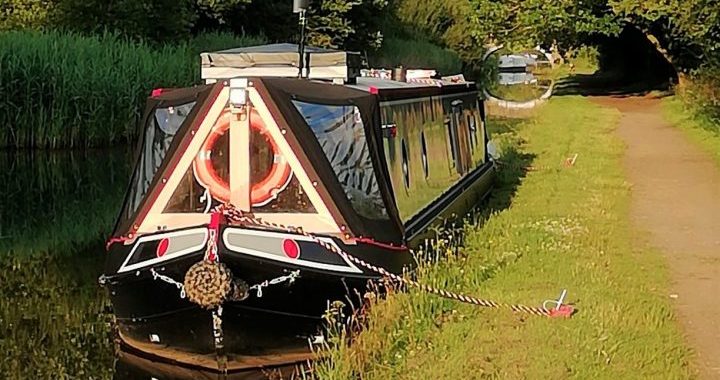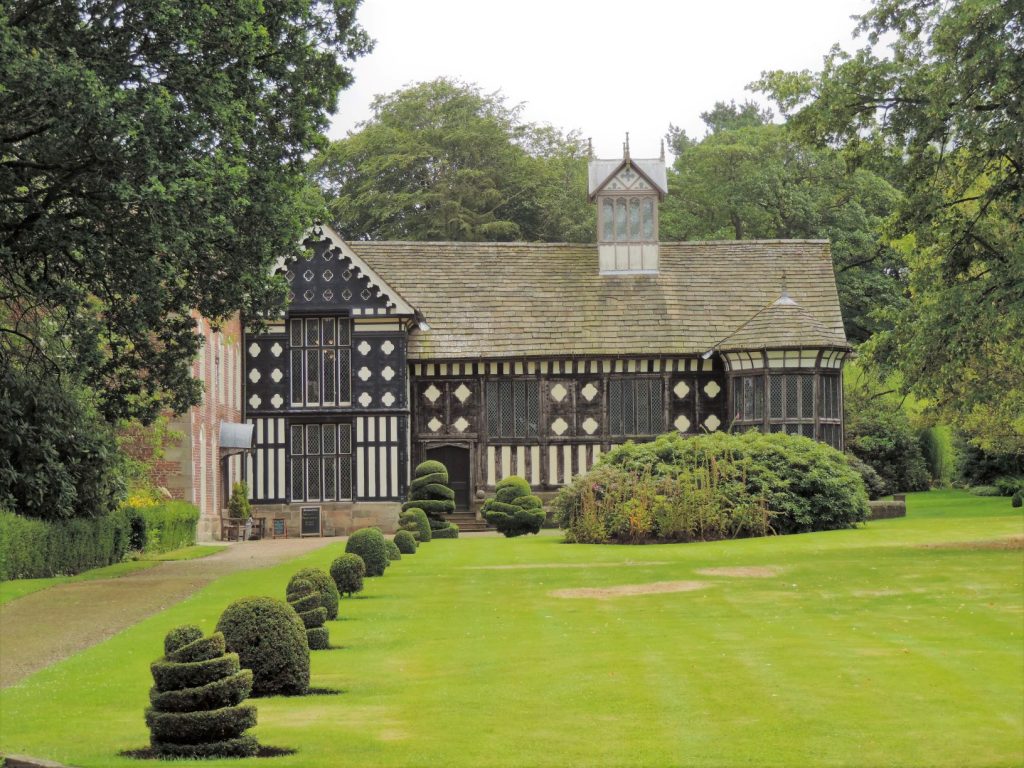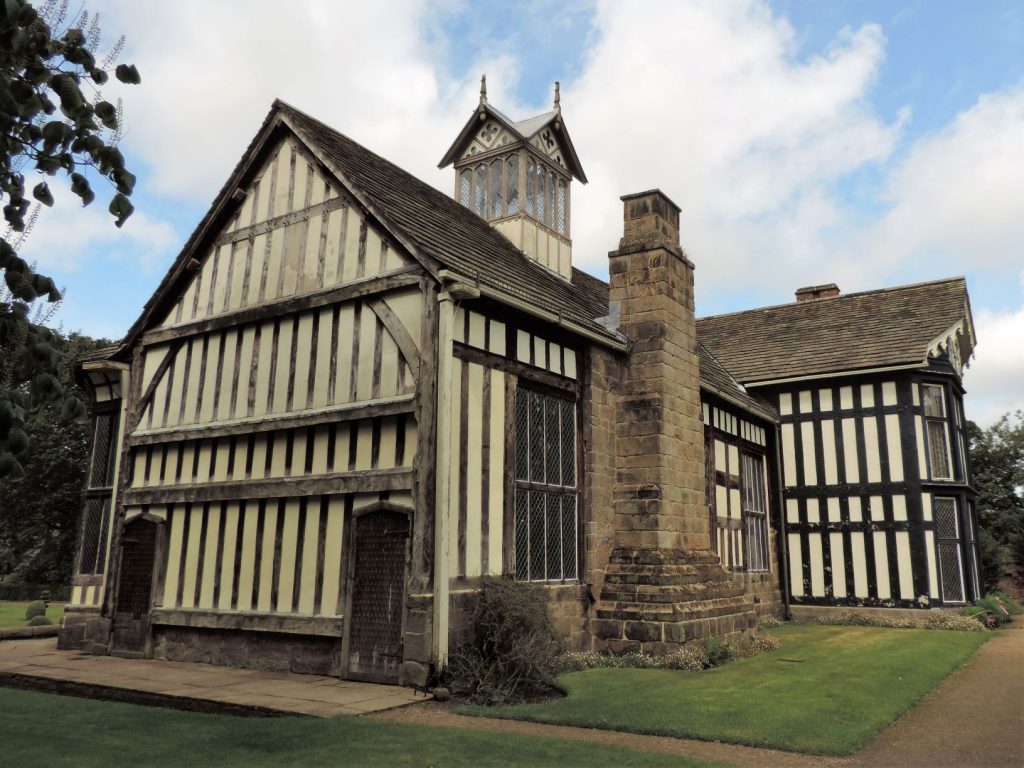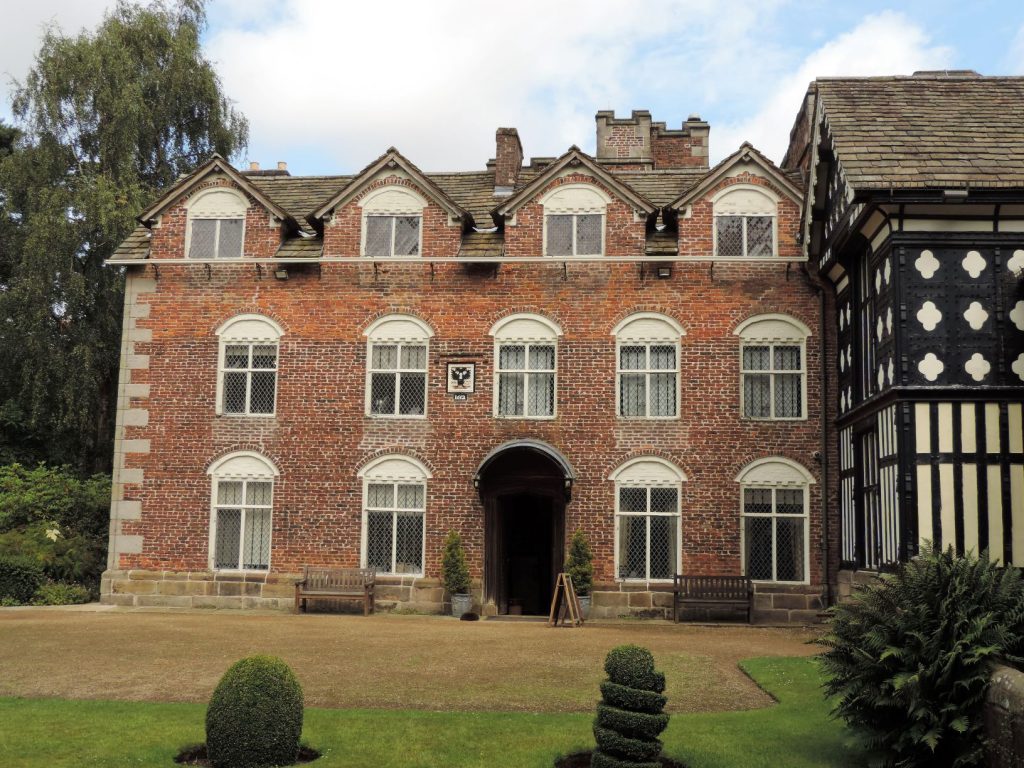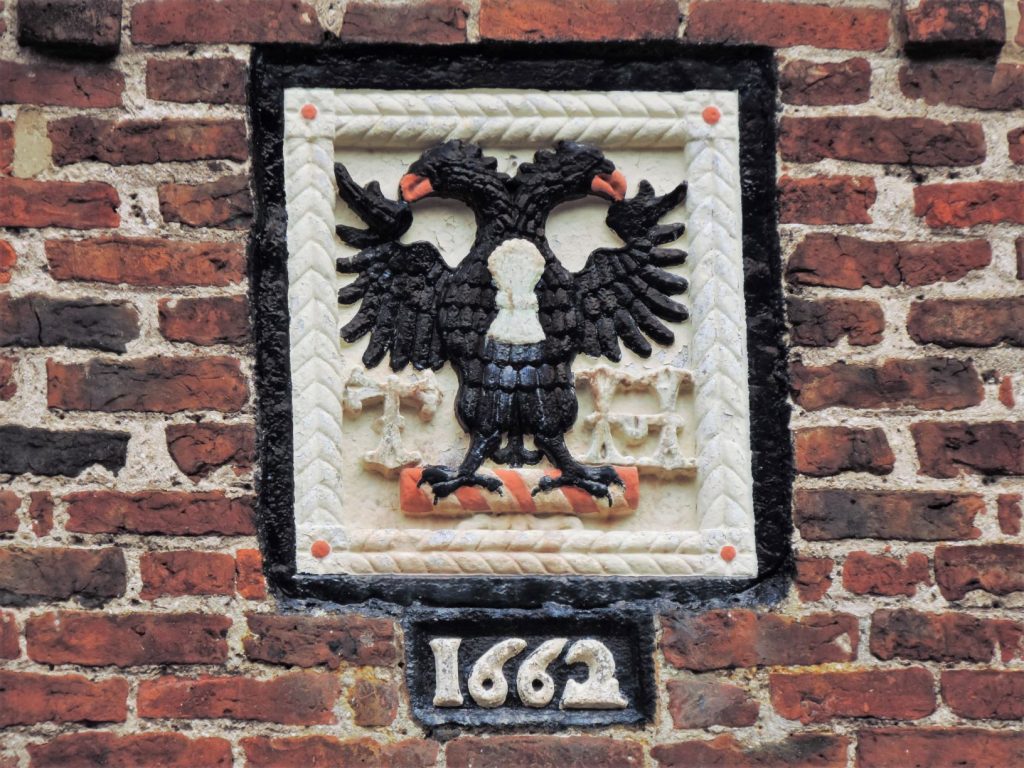Marking time
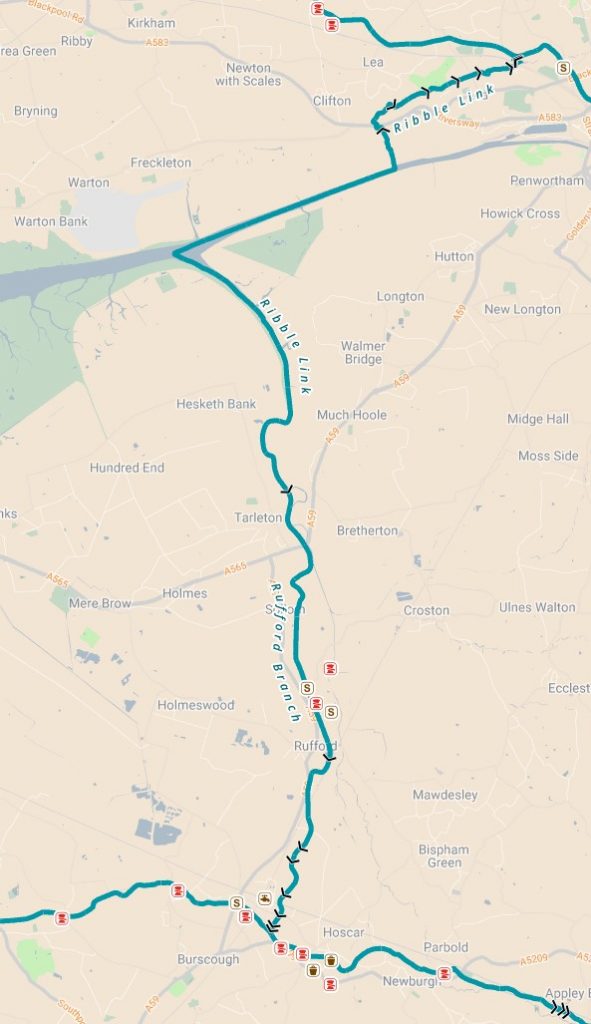
Having worked out that Liverpool would have to wait, we had some time to kill before the various commitments that would drag us back home to Long Itchington and points South. The Leeds & Liverpool carries on from Wigan all the way down to Liverpool, as the name implies. However, there is a branch heading north from Lathom Junction, about ten miles from Wigan, that goes via Rufford to Tarleton where the canal ends and a final lock allows access to the tidal River Douglas. An adventure for another time would be to book passage through this lock and join the escorted convoys that are managed along the Ribble Link which gives access to the Lancaster Canal via the tidal rivers Douglas and Ribble. We wouldn’t be able to do that now but the Rufford Branch itself is only about six miles long so we should be able to take our time getting down there, going up to the end and back down to Fettler’s Wharf, where we were booked in for Sunday 21st July.
Leaving Wigan
Having agreed to partner up with last night’s inexperienced late arrival and leave about nine o’clock in the morning we had no time for the leisurely Sunday morning cooked breakfast we had planned and opted for a sausage sandwich on the move later in the morning. A little irksome, therefore, to get a knock on the boat about five to nine, accompanied by the smell of bacon frying, to say they were running behind and it would be another half hour before they would be ready. Still, we would certainly benefit from the extra manpower so it was worth our waiting for them.
What became apparent through the morning was that the owner’s daughter was pretty capable but was the only person on the boat who was in control of everything; the children, the cooking, the steering and everything else involved. She was right on top of it while the others contributed precisely nothing in any sphere whatsoever. One has to be charitable and assume this is because it was their first day and they simply had no idea what to do or how to do it, in this environment, until they had found their feet. Or they might have been lazy buggers who thought they could just switch off and leave it all to her.
It turned out that, leaving Wigan Pier, there is a very sharp right-hander into the Seven Stars Bridge, which caught me out quite badly and took us right across to the bank. Perhaps I should have looked at the map? If it threw me a bit it certainly took advantage of the novices behind and it was a while before they caught us up again.
We had four locks to do together and they were all in very bad shape. At the last but one, Lock 90, I arrived on foot just as a boat that was leaving finished closing the gate (they hadn’t seen us coming round the bend). In the two minutes it took me to walk up to the lock and try to move the gate it was already too heavy and I had to open every paddle again before the water going in was sufficient to overcome the water leaking out the other end. The two guys from the other boat may not have shown much initiative but they did lend their significant weight to the winding gear and balance beams whenever they were instructed, so not completely useless.
Just as we were about to leave the locks behind, there are none beyond Lock 91 until you reach the Liverpool link itself, you are introduced to the alternative obstacles that proliferate on this section, i.e. the swing bridges. Many are electric but still involve someone getting off, operating the bridge and then getting back on. Often the controls are on the off side so you can’t get to the boat until the bridge is closed again. This is particularly awkward for single crewed boats when you think about it. Also, once your key has been inserted you can’t remove it until the full open / close operation has been completed. For both reasons, no-one arriving at the bridge while it is open can realistically take over without closing the bridge first and then opening it again. On this one we arrived first and I opened it, then ended up waiting for four other boats to pass in different directions before I could close it again. All under the baleful scrutiny of car drivers waiting with varying degrees of patience for us to re-open their road.
On our way we passed the Wigan Athletic stadium we had been warned about on Saturday. It was a rather sad contrast to the highly organised, spick & span appearance of Old Trafford from this angle. We also went through Crooke’s Bridge where we had planned to moor on Saturday night and it seemed to us it would have been OK, in fact. Only if the locks had been open though.
We arrived at Lock 91, the last one. At this point there used to be two locks, marked on our map as Appley Upper Shallow Lock and Appley Lower Shallow Lock. These are now disused, abandoned and bypassed by a single deep lock, which is known as Appley Deep Lock. Generally, you have to admire the inventiveness of the early canal engineers but perhaps not so much in the field of assigning names. They certainly tend to “say what they see”. Here we found ourselves in a bit of a queue. This was our first encounter with the “Rose of Parbold”, an old wide beam with a home mooring in Parbold and adapted to be able to carry disabled groups on trips up and down the canal from here to beyond Burscough and back. A worthy cause, of course, nonetheless it has to be said that ‘The Rose’ became a thorn in our sides for the next few days, always appearing at the most inconvenient moment and blocking the narrowest gaps. On this first encounter she was going down the lock ahead of us and we had quite a wait while the elderly crew, who seemed to be under training, sorted themselves out and conducted a risk assessment, complete with clipboards.
A Pause at Parbold
A mile or so beyond the lock we were approaching Parbold. The warning in Wigan made us think that you need to get the other side of Parbold before finding any civilised society and implied that Parbold, itself, was still quite rough. We already felt that this had been exaggerated and we had passed a few places we would have been happy to moor overnight already. Finding a nice bit of straight bank, with Armco to tie up to, exposed to the sun for the solar power and surrounded by nice fields and woods, we pulled over and wished our companions luck on the rest of their journey. They had told us that they were booked in to Salthouse Dock in Liverpool for the Monday afternoon and we did wonder whether they would make it in the time and where they would find safe mooring tonight. Presumably, the boat’s owner had given them the benefit of his experience on that.
There was a well used path along the opposite bank behind a screen of undergrowth. The map showed a nature & wildlife reserve beyond that, as well as a large area of recreation ground and playing fields. As we finished mooring we could hear the sound of music and occasional announcements played over a public address system. Naturally the first thought was that it was, of course, Bastille Day and these would be the local celebrations. As it turned out it was actually the annual Parbold Village Show in full swing. Once again we had arrived on the local community’s big weekend. This begins to feel less like a coincidence and more as if village fete committees across the north west are monitoring our progress and timing their events to greet us.
As it happens, we couldn’t offer the show our patronage as we settled down to watch the men’s singles final at Wimbledon just after lunch. At the end of that gruelling event we were probably more exhausted and mentally wrung out than either of the two active participants and the show was effectively over. The most we could manage was a short walk for Bracken with a stop by one of Parbold’s pubs for some much needed liquid refreshment.
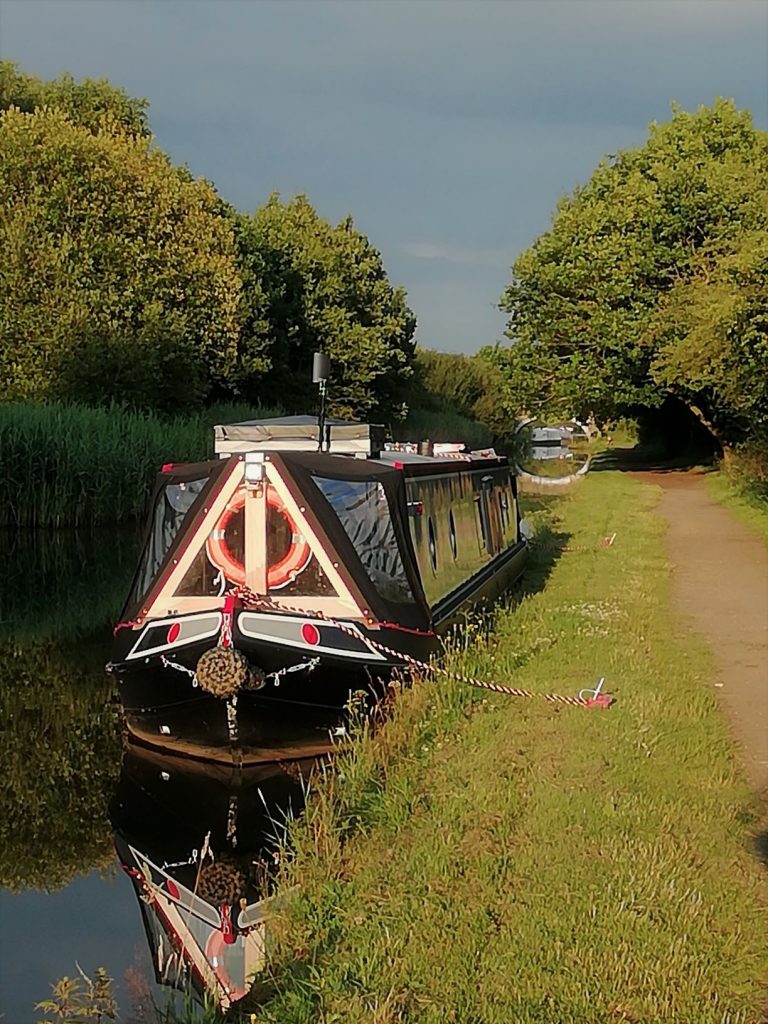
Having initially thought we were being warned off Parbold we were very pleasantly surprised at what we found there. It is quite a large village, with its own railway station, a couple of pubs, coffee shops, art galleries etc. Not many of them have resisted the temptation to use adjectives like “artisanal” and “organic” in their marketing or menus but they seem pleasant enough. There is plenty of space to walk around and everywhere seems clean, neat and well cared for, with a few extra touches, such as this help yourself herb stall. It was so nice that we decided to stay there for another day, since we now had time in hand.
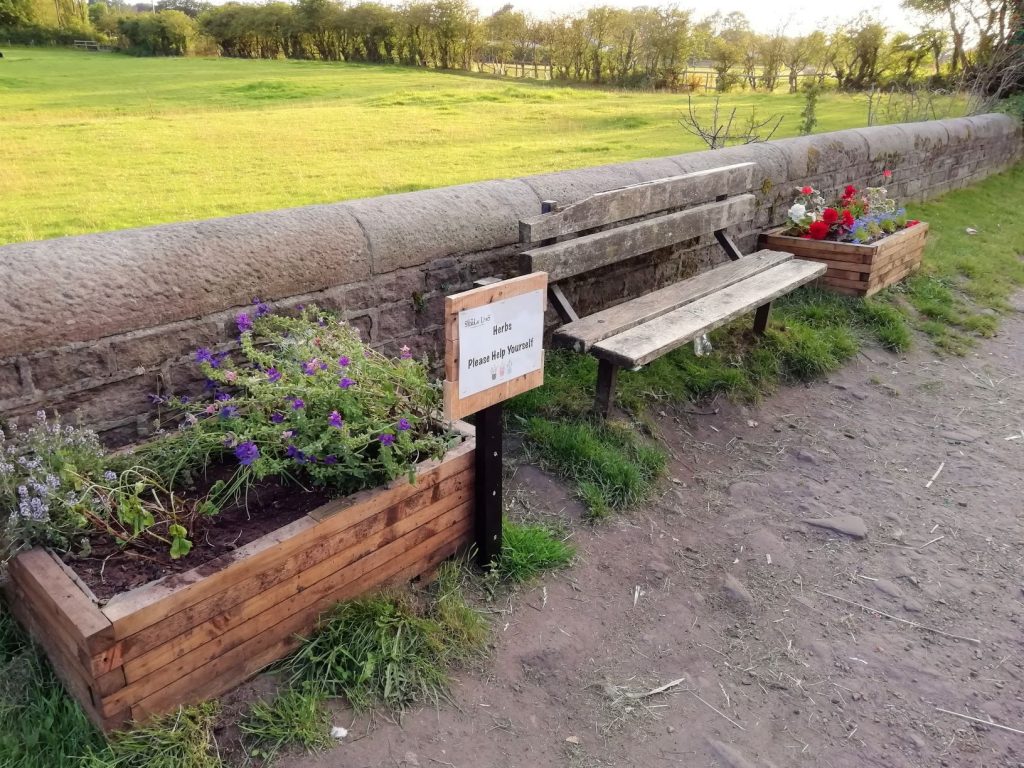
Maybe it was Parbold but Monday was a proper, hot summer’s day, the first for a while. The whole area has a good network of public footpaths around it and after a morning spent fiddling with paint, varnish and rust converter we set out for a walk up to a local view point on Parbold Hill. There was indeed a great view from there, as well as a pub and an ice cream van, neither of which we resorted to on this occasion. We came back down through the far side of the village, on the other side of the tracks but it was all as clean and well-ordered as the area we had already seen. A lot of the houses here are quite large villas so we assume they were the homes of the management rather than the mill workers. We did try one of the tea shops when we got back. Despite a slightly off-putting description the ginger and polenta cake was very nice. I may have mistaken the word polenta for placenta. It turns out that polenta is a kind of cornmeal and I assume they use it because in this day and age, of course, they must be gluten free.
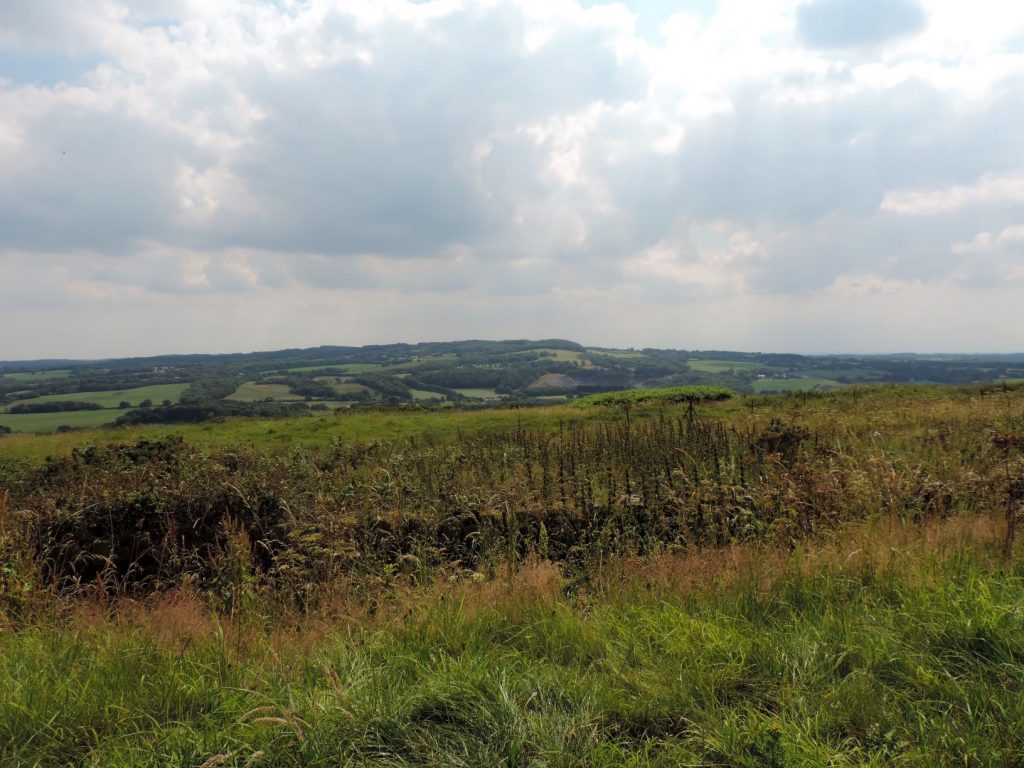
Up And Back Again
Tuesday stayed fine as we continued westward. We wanted a service stop before going up the Rufford Branch so the plan for today was to pass its entrance, stop off at the CRT services in Burscough and moor in one of a couple of places marked in our guide before turning and coming back to the junction tomorrow. There are several swing bridges on the way and at the third one we found ourselves in a queue, as the first boat up was having a problem operating the electric controls. The lights would flash but the barriers wouldn’t come down across the road and the bridge stayed resolutely shut across the canal. Several men had a go and all failed to read the fine print in the instructions closely enough. It turns out that, if you get a lady to read it, the process for resetting the system by pressing Open and Close buttons together is quite clearly explained. By the time this had been pointed out and the bridge was open there were five boats in all. With only room for one or two on the landing the rest were drifting about at various points in the canal.
Having overcome this hurdle and then made way for the “Rose of Parbold” again we passed Lathom Junction and were the third boat in the convoy to arrive at the water point in Burscough, where a couple coming the other way had themselves just started to take on water. That boat had a one thousand litre water tank, which the owner acknowledged he had run pretty dry coming out of Liverpool, as well as it being said that water pressure here was very low. We ended up breasted up against “Roger Dodger”, as there was no room on the side, where we waited and chatted together for a while. That turned out to be about an hour and a half and with two other boats wanting water ahead of us it was well over two hours and at least one more trip for the “Rose of Parbold” before we moved on from there.
The first of the spots identified as a possible mooring was immediately before Crabtree Swing Bridge. It was a space signposted “CRT Visitor Moorings – 24 Hours” right alongside the trestle tables of the Slipway Inn, which gave us pause but it was empty and we were ready to stop so we moored up there. There was almost a stand-off with Lancashire Canal Cruises who operate a trip boat from the pub down to the Rufford Branch and back as they use the landing here as a place to embark and disembark their passengers. They say they have an arrangement with the pub but we don’t know if they have permission from CRT. Happily we found a solution that allowed us to moor and left them space for their boat to land so there was no need to go into the rights or wrongs of their enterprise.

The next day we had to go up through two swing bridges to get to the next winding hole and back through the same two bridges heading back to Burscough. The wind was up this morning so I was quite happy that it was me who had to work the bridges and Sue who had the job of turning the boat, which seemed to go quite well. After a short stop in Burscough to visit a Tesco store and another brief encounter with the “Rose of Parbold” there, we were back at the Lathom Junction.
The Rufford Branch
Immediately on entering the branch from the main Leeds & Liverpool Canal, just under the bridge that carries the towpath over the junction, there is a manually operated swing bridge right in front of a lock. All the paddles and controls are secured with anti-vandal locks requiring the handcuff key and I anticipated a lot of running back and forth undoing and then re-securing these while Sue was bringing the boat round. We were in luck, however, as two volunteer lock keepers were just about to pack up and go home having spent the entire morning in their little hut without seeing a single boat. When they saw me starting to work the swing bridge they suddenly popped out ready to help us through, including doing up all the handcuff locks after we passed by.
We had wondered if we might have a problem in the locks on this branch as some sources said that, although they were still double width, they were restricted to 60 feet in length. We are 59 feet long so the margin was small to start with and we have fender buttons at bow and stern as well as the two bikes to take into account. I asked the lock keepers and they hesitated before guessing 58 feet, which was even more of a worry, although they were happy to see what happened. I took the fact that they didn’t actually know as a sign that it was unlikely to be a problem or they would have been better briefed. Sure enough having entered rather gingerly and checked how the gates closed and the cill position it was clear that we had several feet to spare. Checking the CRT website gives the dimensions as 62 feet long but even that is probably a conservative estimate.
The lock keepers effectively did the first three locks for us and then left us to carry on. We did Lock 4 and pulled over for lunch, entirely alone in the open countryside having seen no other boat in either direction. We had picked a spot where we thought we might moor for the night that was a bit further on after Lock 6 but with rain threatening any time this afternoon decided to take Bracken for a walk to check that out and only move if there seemed to be some real advantage. We finished lunch, opened the back doors and were surprised to find a boat called “Gerty” moored behind us with her nose virtually sniffing our rudder blade. Britain’s first stealth narrowboat; we hadn’t heard them approach or moor up at all.
We didn’t find much to recommend tackling the next two locks but we did identify a better, slightly more open spot just around the next bend and out of sight of “Gerty” so we moved up and moored there for the night. The best of both worlds, as we got to moor on our own for once but could enlist their help in getting through the rest of the locks tomorrow. By then the rain had started so we were glad not to be going further today.
Thursday was a better day weather wise if a lot more breezy. “Gerty” joined us through the next three locks, which are the last before Lock 8 at the end of the arm takes you through to the Ribble Link, which we would not be doing. They were going into St. Mary’s Marina just after Lock 7 where they would be leaving the boat for a few days, just as we planned to do after the weekend. There are two marinas here, literally facing one another across the canal but as far as we can tell there is no animosity between them. We had chosen Fettler’s Wharf, entirely at random and because the name had a nice ring to it. Although we were not mooring here until Sunday night we did pull in and get some diesel etc., which gave us a chance to make sure we had an electricity card and a key for the gate to the outside world and to get some local intelligence about the winding hole at the bottom of the branch and the amount of mooring available there.
We provided plenty of entertainment exiting the marina in what was now a fairly strong wind. Marinas are always areas of open water that give any breeze free rein but on entering this branch you drop down quite quickly to the level of the surrounding countryside and increasingly the landscape reminded both of us of the fens; very flat, though perhaps not as flat as Norfolk, wide open and with lots of reeds in evidence. Ideal terrain to allow the wind to do its worst even in the confines of the cut. It continued to make life interesting as we negotiated a few more swing bridges, at one point absolutely pinning us to the bank on the lee side. We only managed to get unstuck by poling the stern right out across the canal, reversing at full revs to take us across to the opposite bank against the wind and taking a run-up in forward to give the rudder a chance to bite before we could be blown to the other side again. Progress from there was mainly achieved by keeping the boat at 45 degrees to the line of the canal. Exchanging greetings with a succession of boats that must have been the day’s convoy arriving from the Lancaster Canal across the Ribble Link they did all look as though they were enjoying having that experience behind them.
The visitor mooring at the bottom of the branch lies just beyond the last swing bridge. The last winding hole large enough to take us that is marked on the map is just before the swing bridge. For that reason the plan was too turn the boat at the winding hole, open the swing bridge and reverse up through it and along the visitor moorings to whatever space we could find. In the conditions this was a plan that made me slightly nervous but as it turned out the turning point was a little sheltered by trees and very wide so that part was fairly easy and the whole reversing thing seemed to go OK.
Tied Up In Tarleton
The settlement at this end is called Tarleton. Despite the inconvenient wind the weather was bright enough this afternoon so we had a look round. On paper it looks as if Tarleton should be similar to Parbold. A large dormitory village with most of the amenities you would expect and a lot of phases of new housing development around it. The cafe’s and heavy reliance on the organic and artisanal were there but in practice it just didn’t have the same feel. We decided that the main factor was the traffic and the lack of open space. Everywhere we went the pavements were very narrow and the traffic very close. Often there was only pavement on one side and that would keep changing from one side to the other with no crossing place to assist the pedestrian. The road junctions were remarkably busy again with no crossings for anyone on foot. There were a lot of sports fields and some woods at the far end of the village, which seemed to be very well used but they were the other side of a large housing estate with no paths through it so that it was a twenty minute walk to get there. There also seem to be very few footpaths around to make up a walk around Tarleton and there don’t seem to be any other parks or recreation grounds around.
One reason for being moored here was to meet Dave from Aintree Boats for some more snagging. On a truly filthy day for rain there was work to create more ventilation around the stove and fitting the replacement stern locker lid. There was no progress on the central heating as they are still waiting to discuss it with the boiler supplier but the issue we really wanted to resolve today was what is happening with the water tank. Fill it to the top and five minutes later the gauge sits at three quarters and the level seen through the filler hole has dropped. An extra jubilee clip, a better understanding of the water tank geometry and a recalibration of the gauge itself should mean this has been resolved. So far, the theory seems to be holding up but most of the pudding to provide the proof remains to be eaten.
There was a lot more rain to come that Friday so being moored up for the day was a good thing. We felt for another small flotilla of boats coming past that must have just crossed the Ribble Link in the wet. We did get out for another walk along a canal path and back around the town but the first impression held true. This was a place that people used to sleep and drive in and out of with no concessions for the pedestrian.
Returning To Rufford
On Saturday, a much better day weather-wise, we set out for Rufford, which gives the branch its name and lies roughly half way along it. There is a lot going on here. There are two marinas facing each other across the canal just past Chapel Bridge, with Rufford Lock immediately beyond their entrances, a railway station two minutes walk to the left, visitor moorings just before the bridge and Rufford Old Hall, a National Trust property we were planning to visit, opposite the moorings. It was a nice simple cruise for the morning and we found plenty of space at the moorings, as well as a kingfisher. We haven’t seen that many this year but this one appeared to have built a nest on the off side. Small groups of people appeared beside the boat at intervals in the afternoon to watch it flying back and forth, some of whom told us they had been coming down every day to monitor its progress.
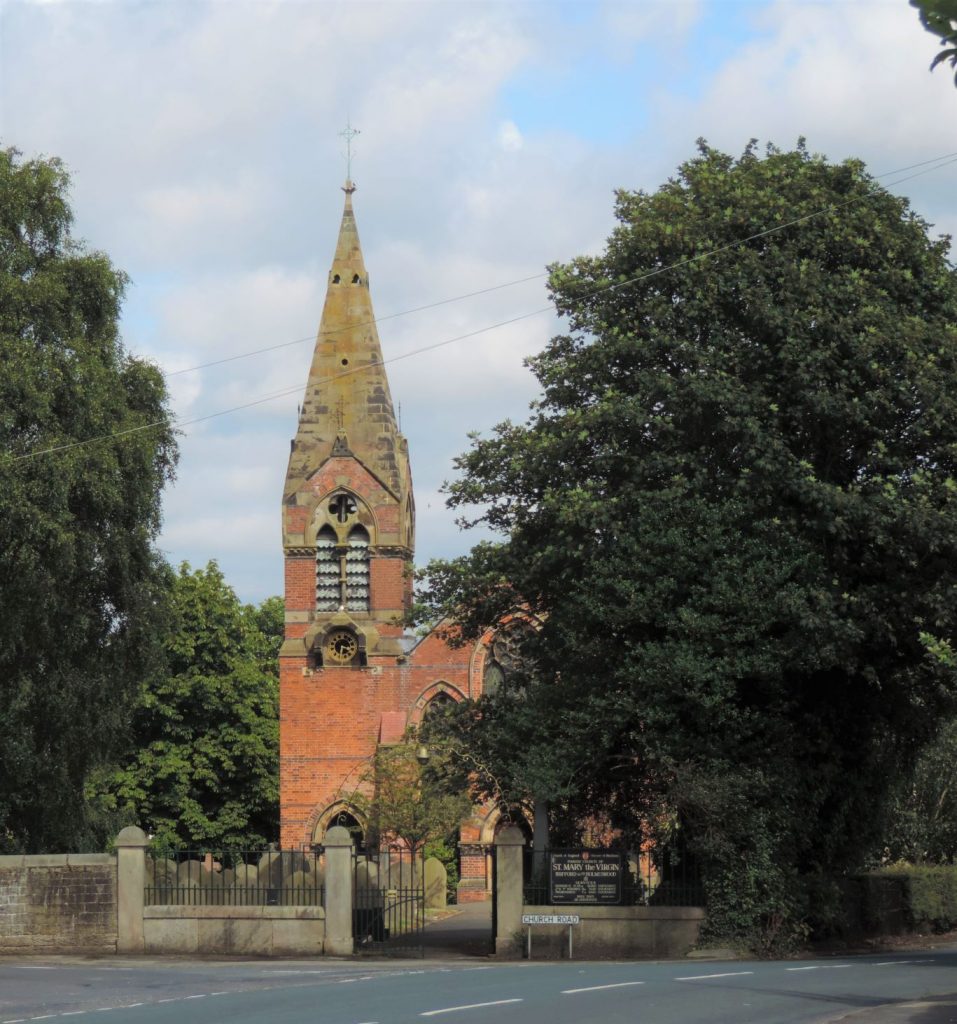
St Mary’s Rufford 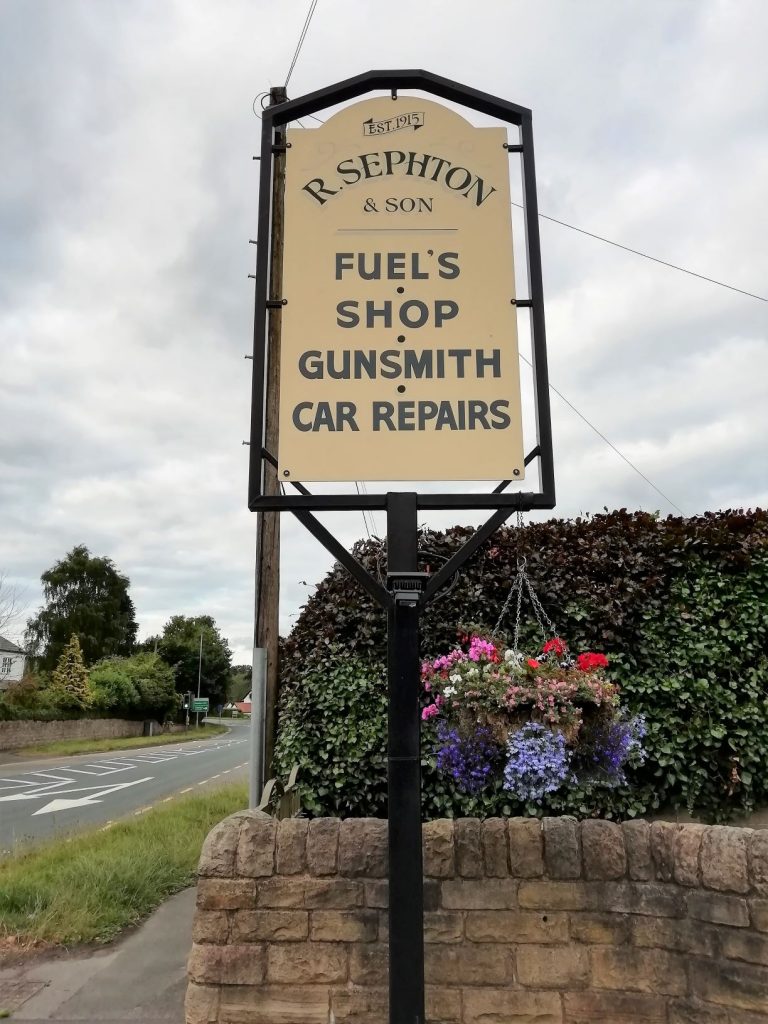
Fuel, Eggs, Milk, Guns
Rufford itself seems a nice well-kept village with lots of old buildings that have been bought up and converted in different ways. There is very little in the way of shops compared to Tarleton but the pavements are wider and easier to negotiate. There is a little post office and convenience store, closed on a Saturday afternoon and a pub the other side of the busy A59. The local garage is well-established and, unusually, doubles as a gunsmith. Similar to Tarleton there is a lack of any recreation ground or park, so nowhere for Bracken to run and chase a ball, although the towpath is always available. We did visit the hall and it was an interesting property but the grounds are very small and half of them are closed to dogs for some reason.
Strangely, the jewel in Rufford’s crown appears to be the café at St. Mary’s Marina. From our very first lock on the Rufford Branch we had been told that their cakes were unparalleled in Lancashire and everyone we had met on the way repeated the same glowing recommendations. Saturday tea, then, was in the diary and we duly wandered up there. They confused us a bit by advertising themselves as The Boathouse Brasserie but it turned out this was the marina café and an excellent establishment it was. There is a wooden building with a large terrace that overlooks the marina, the canal and their competitors across the water with plenty of green fields in the view. They offer an extensive menu covering everything from breakfast to teatime via midday sandwiches or full luncheon meals. Being close to the A59 and National Cycle Route 91 it soon became clear that it was a favourite destination of both bikers and cyclists but on a busy Saturday afternoon all of it seemed very efficiently served at a reasonable price. The much talked about cakes certainly lived up to their reputation.
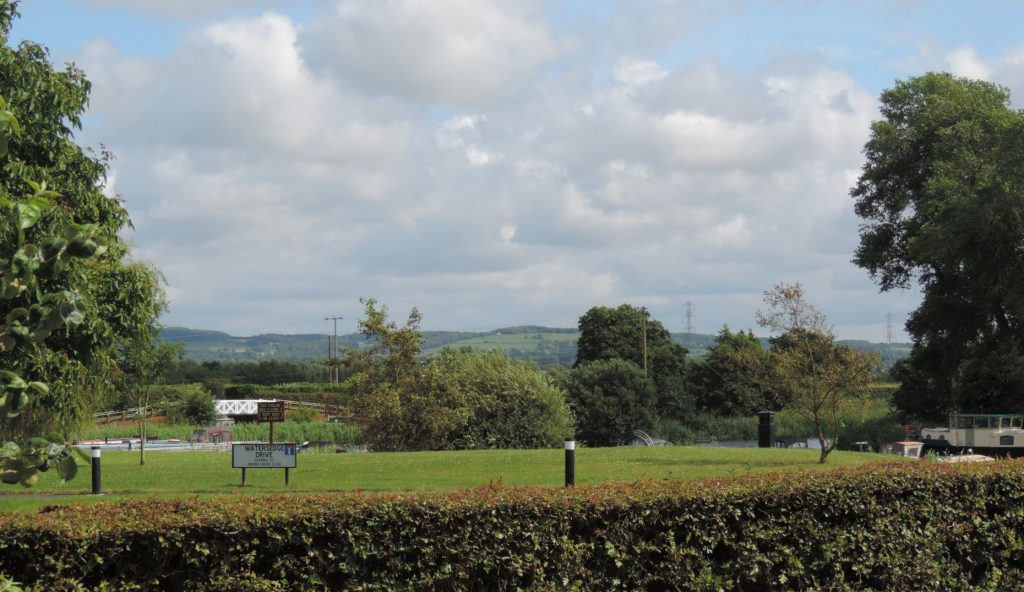
Sunday was another fine day and the threatened heatwave for the coming week began to seem more likely than it had in Friday’s rain. As we only had to travel about five hundred yards to enter the marina we were booked into, it seemed only right to go back to the café and enjoy a proper Full English breakfast before undertaking that journey. When we did move up it turned out that there wasn’t quite enough room, by about three feet, to come into the entrance and straight round onto our berth without backing up into the main lagoon first. Sadly we didn’t find that out until we had tried and failed the direct route so an embarrassing period of backing and filling ensured our arrival did not go unnoticed. Even so we were moored up on our berth by eleven o’clock.
The next week would be dedicated to seeing friends and family back in Croydon, after we had picked up the car from home. Then we had a date with the house builders to do their minor snagging at the end of the following week. All in all we would be away for a fortnight so it was useful to have plenty of time and decent weather to clean around the boat and square things away before we caught the train the next morning.

